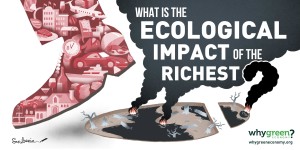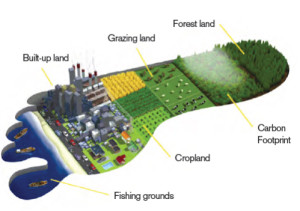Ecological footprint of the richest: Germany country profile
Introduction
 This country profile is part of the research on the inequality of overconsumption which attempts to quantify the full ecological footprint of the richest people in different countries around the world. Read a summary of the working paper published by the Global Sustainability Institute, Anglia Ruskin University (read the full working paper).
This country profile is part of the research on the inequality of overconsumption which attempts to quantify the full ecological footprint of the richest people in different countries around the world. Read a summary of the working paper published by the Global Sustainability Institute, Anglia Ruskin University (read the full working paper).
As there is no data or research available on the ecological footprint of the richest the focus here is on High Net Worth Individuals in the countries where they are concentrated: the United States, Japan, Germany, China, United Kingdom and France.
Identifying the richest people in Germany
Total population: 80 million in 2015 (Source: CIA World Factbook, July 2015 estimate)
This research uses the number of High Net Worth Individuals to identify the richest people in the United States. HNWI’s are defined as “having a minimum of US$1 million in investable wealth, excluding primary residence, collectibles, consumables, and consumer durables”. In 2014 there were 1.1 million HNWI’s in Germany (Source: Capgemini and RBC Wealth Management)
Inequality indicators
Income inequality: Share of income captured by the richest 1% in 2008 was 13.8% (Source: The World Top Incomes Database)
Wealth inequality: Share of wealth captured by the richest 1% in 2010 was 24.5% (Source: OECD Wealth Distribution Database)
Ecological footprint indicators
This research uses the ecological footprint as a reference point to discuss the overconsumption by the richest people. The Global Footprint Network methodology explains that the “ecological footprint of a person is calculated by considering all of the biological materials consumed and all of the carbon dioxide emissions generated by that person in a given year.” This includes a person’s consumption of products from fisheries, cropland, grazing land, forests (wood and capture of carbon dioxide), and also use of urban land (Source: Global Footprint Network).
Lack of data on the richest people
There is currently no data available to accurately quantify the different components of the ecological footprint of the richest people Germany e.g. their total carbon footprint. The closest information available relates to the richest 20% and is based on household expenditure surveys (see methodology for discussion of strengths and weakness of using this metric).
| Germany: Private consumption expenditure in 2013 | Total all deciles | Richest 20% | Poorest 20% | ||
|
Total expenditure
|
€12,462 |
€4,287 (34% of total) |
€976 (8% of total) |
||
Source: Income, receipts and expenditure of households – Net household income 2013, Destatis (2013)
Complementary data
Research analysis based on the National Nutrition Survey II (2008) shows men and women of higher socio-economic status (based on income, education and current employment) ate more vegetables, fruit and fish, and consumed less meat and meat products, confectionery as well as fats and oils than participants with lower socio-economic status.
————————————————————————
Submit data on the ecological footprint of the richest people in Germany
The data you submit can either be in any format e.g. statistics, visuals, symbolic examples. If the data you want to submit does not fit with the categories below contact us.


Leave a Reply